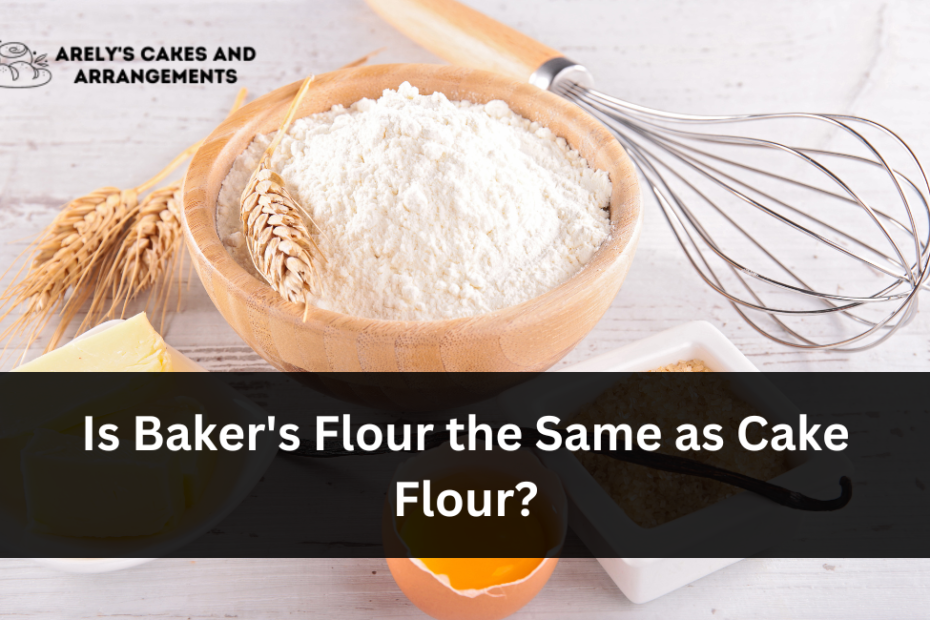Embarking on a baking journey is like setting sail into a world of tantalizing aromas and sweet indulgences. In this delectable realm, the role of flour takes center stage, and choosing the right type can be akin to selecting the perfect paintbrush for a masterpiece. Amidst the flour varieties, baker’s flour and cake flour often stir confusion. Are they interchangeable ingredients or unique elements in the baking symphony? Let’s delve deeper into the floury landscape to unravel the mysteries that lie within each grain.
Understanding Baker’s Flour:
Picture baker’s flour as the reliable sidekick in the baking saga—a culinary superhero with strength, adaptability, and a knack for versatility. Commonly known as all-purpose flour, this kitchen workhorse strikes a delicate balance between protein content and adaptability, making it the go-to choice for various baked goods.
With a protein content ranging from 10-12%, baker’s flour contributes the necessary structure to baked creations. This structural support is crucial for cookies that hold their shape, muffins that rise gracefully, and rustic bread with a hearty crumb. It’s the unsung hero that ensures your culinary endeavors are met with success, regardless of the baking venture at hand.
Cracking the Cake Flour Code:
Now, let’s shift our focus to the prima ballerina of the baking world—cake flour. Imagine this flour type as the elegant dancer on a finely tuned stage, where delicacy and finesse take precedence. Unlike the all-purpose nature of baker’s flour, cake flour is meticulously milled to achieve a powdery texture, embodying the essence of refinement.
What distinguishes cake flour is its lower protein content, typically ranging from 6-8%. This lower protein level is the secret behind the ethereal texture of cakes, providing a tender crumb that practically dissolves on the palate. It’s the key to achieving that sought-after melt-in-your-mouth quality in delicacies like sponge cakes and tender cupcakes.
Spotting the Differences:
Let’s break down the disparities between these two flour protagonists:
- Protein Content:
- Baker’s Flour: Moderately high protein content (10-12%).
- Cake Flour: Lower protein content (6-8%).
- Texture and Structure:
- Baker’s Flour: Lends structure and strength to baked goods.
- Cake Flour: Creates a tender and fine crumb texture in cakes.
- Versatility:
- Baker’s Flour: Versatile for a myriad of baked goods, from cookies to bread.
- Cake Flour: Specialized for delicate cakes and pastries.
- Fineness:
- Baker’s Flour: Exhibits a coarser texture compared to cake flour.
- Cake Flour: Finely milled for a smoother batter.
Choosing the Right Flour for Your Baking Adventure:
Armed with an understanding of these flour personas, you can now make informed decisions based on the baked delights you wish to conjure:
- Baker’s Flour:
- Ideal for heartier baked goods that demand structure.
- Perfect for cookies, bread, pizza crusts, and muffins.
- When strength and resilience are key.
- Cake Flour:
- Tailor-made for light and delicate desserts.
- Use for sponge cakes, angel food cakes, and tender cupcakes.
- When a soft and tender crumb is the goal.
Tips for Flour Swapping:
In the unpredictable realm of baking, flour substitutions may become inevitable. Fear not! With a few simple adjustments, you can still navigate the baking seas:
- Baker’s Flour to Cake Flour:
- For every cup of baker’s flour, remove two tablespoons and replace them with cornstarch. This mirrors the lower protein content of cake flour.
- Cake Flour to Baker’s Flour:
- For every cup of cake flour, add two tablespoons of baker’s flour. This compensates for the lower protein content of cake flour.
Conclusion:
In the grand ballet of baking, where precision meets passion, both baker’s flour and cake flour play pivotal roles. They are the yin and yang of the culinary world, each contributing its unique strengths to the symphony of flavors. Armed with this knowledge, go forth into the kitchen, fearless bakers, and let the aroma of success fill the air. Bake on, and may your creations be as delightful as the journey itself!
